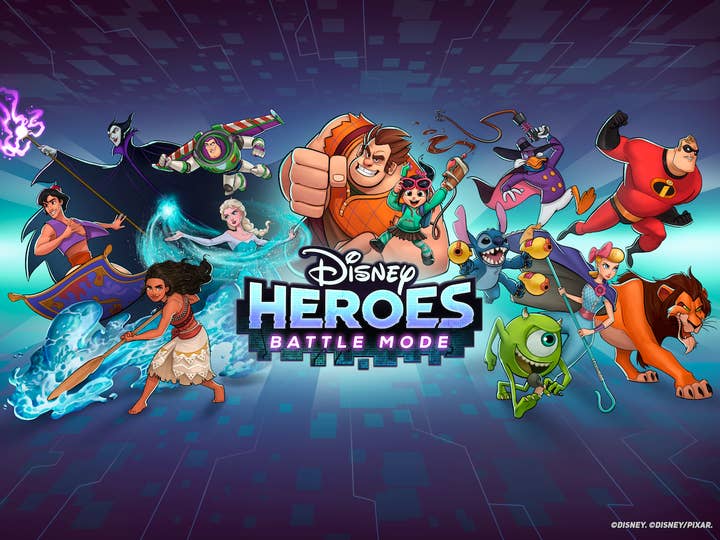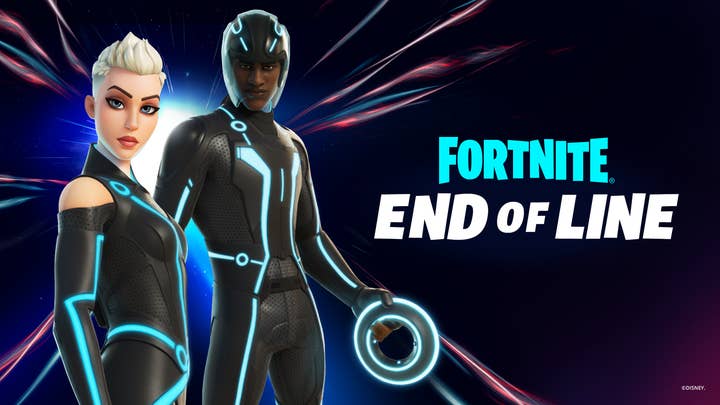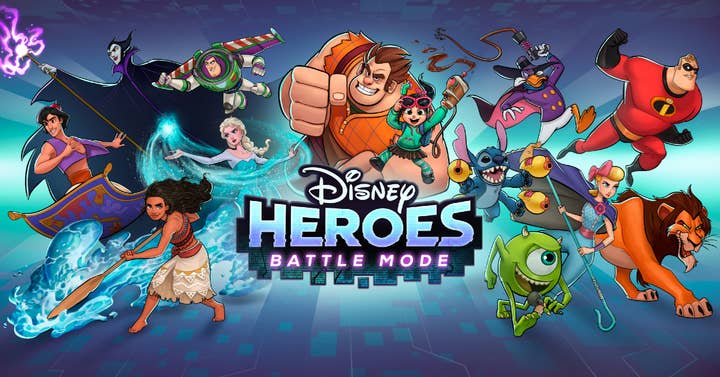What does Disney want in a development partner?
Glenn Dphrepaulezz discusses the entertainment giant's approach to licensing and how it attempts to reinvent Disney and Pixar IP with third-party partners
Disney has some of the biggest brands on the planet and the resources to bring them to games itself.
But in recent years, and following up on an initial gaming strategy that didn't quite work out for the company, it has instead chosen to rely on third-party partners to establish its licenses within the games industry -- and is becoming gradually more ambitious about doing so.
As senior managing producer for Disney and Pixar titles in the company's Games and Interactive Experiences team, Glenn Dphrepaulezz is involved in the early ideation process for Disney games developed by third-party studios.
Disney's approach to licensing has been successful in recent years because the company works with partners who are keen to elevate the company's IP, Dphrepaulezz suggests. For him, the best partnerships typically happen when they go beyond what he calls a "brand slap."
"Just because a game is good inherently, putting Disney on top doesn't necessarily just make it a Disney game"
"The best partner for us usually includes a couple of things -- one is being fans of Disney," he says. "It's very difficult to work with a partner who is not inherently a fan. [It's] not impossible but it just ends up working a lot better in terms of being able to go through the creative process.
"[It's] having a partner that is open to having creative discussions. What you need is not to just pair the IP that you're licensing with a tried and true mechanic that exists somewhere else, which ends up becoming the formidable brand slap, just throwing something on top of something else. Just because a game is good inherently, putting Disney on top doesn't necessarily just make it a Disney game.
"Now for the partners that are actually looking to make a good match, I would say their best foot forward would always be to try to lean into the core aspects of what made that license appealing to whatever the other media would be. If you're going through the lens of authenticity of what the characters [and the story] are, and then you find ways to feed the genre into that.... You end up with a much better execution, almost 100% of the time."
The partnership also needs to find the right balance between attracting a new audience and appealing to existing fans of the license. This could be particularly important for traditional Disney IP or Pixar properties that tend to attract a younger audience. The key is to provide a low barrier to entry, but hidden depth that can cater to players who are interested in exploring more.
That's the approach the company took with turn-based RPG Sorcerer's Arena, created by Glu Mobile, as well as Disney Heroes, a mobile RPG developed by PerBlue in which Disney characters from various franchises battle side-by-side.

"That's always a tricky one, but I find that it hasn't been as difficult as one would expect," Dphrepaulezz says. "We ended up finding that people who have nostalgia around Disney IP are willing to try a new thing as long as we don't set the challenge as insurmountable. So Sorcerer's Arena is not made in such a way that it's gonna deter people who haven't played that genre before, and we take that into consideration for all of our games that are more 'core'.
"Disney Heroes has had a similar thing. We make sure the barrier to entry is light while ensuring that there's still depth for the players who actually want that genre of game. Disney fans will still be able to engage with [our games] without actually compromising some of the more core players that are into that deeper metagame type of design."
Dphrepaulezz has recently been working with Kabam on Disney Mirrorverse, currently in soft launch and due to release later this year on iOS and Android. He says the title is a prime example of how Disney is trying to do things "a little bit differently" when it comes to licensing.
"We started taking a different approach in terms of how we are finding ways to lean into licensing opportunities, not as things that are derivatives of existing products"
"We started taking a different approach in terms of how we are finding ways to lean into licensing opportunities, not as things that are derivatives of existing products, but more how we're leaning into the strength of some of the IPs and building upon them -- not just say an extension of the film, but something that feels like a different take on things that people have an affinity for beforehand.
"Mirrorverse is an interesting one because that is very obviously not a sequelisation of a film nor is it a direct narration of a film that already exists, but more of a [case of] 'How can we take the aspects of things that people love about a character or story and stay true to [them while] bringing it to an execution that is in some way surprising?'"
Taking well-known characters and settings and evolving them while staying true to the original IP is one of the biggest challenges when it comes to working on a license. It's particularly true when it comes to Disney properties, which have been so well known for many decades.
"It's easy to put Belle from Beauty and the Beast in a point-and-click adventure and just have her go around France and that sort of thing, taking a point within an existing storyline and just have her do things that are part of the Beauty and the Beast world," Dphrepaulezz explains.

"It's fine and I think that's there was an era -- I want to say 15 years ago -- where licenses and products like that actually probably were successful, but I think [now] we want to take more of a creative approach, so we can tell new stories or different stories or surprise players in a lot of ways [by] giving them content that uses what they love about Belle but in a way they didn't actually expect or anticipate, while still feeling authentic."
A lot of Dphrepaulezz's work revolves around helping partners understand the characters from the IP the way that Disney understands them, and making sure that it feels like the character exists independently from the setting they initially evolved in.
"So for someone like Belle, we go through the process of actually establishing with our partners and teaching them: 'These are all the things about Belle that make her what she is,' from a narrative standpoint, before we actually start talking about what other things we can do with Belle.
"That part tends to be a challenge because a lot of partners, being fans of Disney, think that they know the character well but what they end up finding is that they know the character from a consumer perspective and not necessarily the nuances that make that character feel like... they are still that character independently from the world that you put them in."
While Dphrepaulezz can't go into details about Mirroverse as it's a work in progress, he takes the example of Disney Heroes, which he calls the company's "first foray into this different type of storytelling, in a lot of ways."
It was the first time the teams set themselves to create a narrative on mobile in which Disney characters who don't typically fight needed to be in this situation altogether, while still feeling authentic.
"How do we get all these characters in a world that is outside of their regular timeline? They each typically have [their] own, even if a lot of fans try to put them all in the same [canon]. It's not that way officially. So when we are coming up with ideas around this, we usually are working with the partner saying: what are the key tenets of what we want to get out of the creation of this product? What are the authentic pieces that we want to lean into the most and how can we find our path to an execution that works?
"One of the things that's complicated is establishing a narrative conceit. How do we come up with a narrative story that doesn't feel cheap or arbitrary, weighty enough to give a reason why these characters exist?"
"And so going back to a character as being a focal point, for Heroes the idea was less about making them different or evolved, but more how that character was stepping up to the challenge that was presented to them in the context that we wanted to present in that narrative. And so the Belle character, for example -- Belle is not necessarily a fighter even though the game is mostly about fighting. But what would Belle do in a circumstance where she had to defend the things she cared about the most? So you think about the scene in The Beauty and the Beast where she tries to leave Beast's castle and she's encountered by the wolves in the woods.
"And up to that point she's obviously a very strong-willed woman, but she's not a fighter. But in the circumstances that she's in, she has to find a way to do what she needs to do to help her father. She knuckles up, right? This is just the circumstance she's in. So it's taking these aspects of the character, thinking about the scenario, and then trying to find ways to make it so she naturally goes into that scenario."
Evolving the characters so they make sense in a completely different context is only one aspect of working on a license. You also need to make that world feel authentic, Dphrepaulezz continues, which means coming up with a solid narrative to support the vision.
"One of the things that ends up being complicated is establishing a narrative conceit. How do we come up with a narrative story that doesn't feel cheap or arbitrary but feels weighty enough to give a reason why these characters exist? So it's not just a portal opened up and other characters started flooding in. As a narrative conceit, that's kind of a shortcut, something we just came up with in order to just cross that particular hurdle. But we want to make the story feel as authentic as the effort that we're putting into the character."

Taking the example of Disney Heroes, Dphrepaulezz explains that originally that game's conceit was built around Ralph Breaks the Internet, so the idea was that a program had been made that was creating duplicate copies of all of the Disney films.
"The antagonist was called 'the Inventor', and so he wanted to create a Disney World that was just for him, and his obsession with the actual Disney IP is why these duplicates of these characters were made. And so we tried to find ways to build the narrative around that so that there would be a reason for these characters coming together. And then also built the entire gameplay around it."
It's no secret that some older Disney IPs feature stereotypical views that are now dated and offensive. Films such as The Aristocats, Peter Pan and Lady and the Tramp came to streaming service Disney+ with a content warning for racist stereotyoping, for instance. And of course, many Disney princesses have been criticised for being a reductive portrayal of women.
As many companies have attempted to capitalise on nostalgia in recent years, evolving an IP beyond the original perspectives it represented is crucial.
"Disney princesses, when you break [them] down into just their character traits, you end up finding that a lot of that transcends time"
"The short answer [to] whether or not we've had to deal with how to adapt a character that might have been part of a narrative written during a time in which perspectives might have been a little bit different [is]: absolutely," Dphrepaulezz smiles. "All the time. It's a healthy consideration though because we never end up finding that we are at a roadblock with those things."
He explains that one way to overcome this challenge is to break down the character's core traits so things emerge that can be used in a way that makes sense for the new settings they're in.
"Disney princesses, when you break down the majority of the characters into just their character traits and what makes them who they are, you end up finding that a lot of that transcends time. In some cases who the character was in the narrative and the timeframe that they were written is a lot of the reason why it ends up feeling [like] it's tough to make the transition. The 'easy ones' are a Tiana or a Jasmine or Belle -- those who aren't married, those ones who already inherently [are] tough chicks. So being able to actually take them into a narrative to do something different is not that hard.
"Then you have the ones that are a little bit more difficult -- you have an Aurora or Cinderella or Snow White especially, where it's a little bit trickier. But with these you're breaking down what their core traits are. You [can] think [that] Cinderella just cried a whole bunch and she had a bunch of friends help her at a time in need and she didn't do much of anything. That's a potential approach you can look at. But when we look at it more from a standpoint of: she has a very strong and kind heart, she has perseverance, she does rely on her friends a lot, but ultimately it's her ability to make decisions that actually drives her moving forward. And she has a lot of things in her world that she actually leverages."
In some cases, you need to adapt the character in a more radical way to be able to make meaningful changes -- Snow White being a good example.
"What if instead of being 15 she were 18? What would the three years of maturity do to her character from a development standpoint and can we take that somewhere as well?," Dphrepaulezz explains.
"Are things more difficult to work with because of [that]? Yes. But none of them are impossible. I think that there are some things from an IP standpoint, we just don't touch because culturally, they're not something that we like to use very often. But I think that the ones that I mentioned are things that we like to work with, that have an option, have an availability we try to actually push forwards a little bit."

